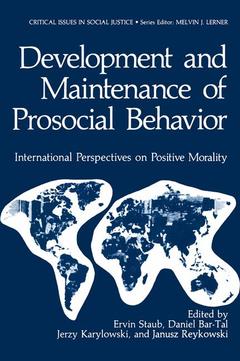This book was inspired by an intimate, stimulating, intellectually enrich ing conference that took place in Poland. However, the book is not a conference report. Rather, at the time of the conference, participants agreed that it would be worthwhile to create a volume representing the international state of knowledge in pro social behavior, and many of them agreed to write chapters. This volume is the outcome. The book contains chapters by outstanding researchers and scholars who have made substantial contributions to some aspect of scholarship about pro social behavior-helpfulness, generosity, kindness, coopera tion, or other behavior that benefits people. The book concerns itself with how prosocial behavior comes about and what influences contrib ute to or inhibit it; how prosocial behavior, or values and other personal characteristics that promote prosocial behavior, develop; how socializa tion, peer interaction, and other experiences contribute to development; and with the cognitive, emotional, and behavioral consequences of re ceiving help. Some chapters directly, and a number of them implicitly, concern themselves with applications of knowledge about prosocial be havior, particularly with the question of how cooperation and behavior that benefits other people can be promoted. The purpose of the book is. in part to show where the field stands and what knowledge we have accumulated, and in part to suggest fu ture directions and advance the field. It is a truly international book, with contributors from most countries where research on pro social be havior is being conducted.




